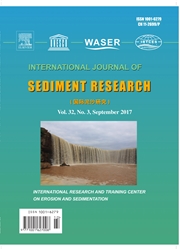

 中文摘要:
中文摘要:
Benthic macroinvertebrates 通常为对水的生态学的评价被用作指示物种类。Streambed 沉积,或底层,为 macroinvertebrate 社区处于产地条件起一个重要作用。领域调查被做在各种各样的溪流 substrata 学习 benthic 差异和 macroinvertebrate 作文。有不同的床沉积,纬度,和气候的采样地点沿着长江,黄河,东方河,和回教的安息日河被选择,在中国。结果证明在不同 substrata 发现的 benthic 社区结构清楚地不同,当在类似的作文和流动条件的 substrata,但是在不同大气候发现的那些是类似的时。因此,学习证明 benthic macroinvertebrate 社区被底层作文和流动条件主要影响,但是由纬度的位置和大气候通常是未受影响的。macroinvertebrate 社区的 Taxa 丰富被发现在盖住水生植物的卵石上最高,在泥土床和缺乏植物生物资源的卵石床上在盖住苔藓的基岩上高、低。这样,沙的床紧缩、不稳定没有 benthic macroinvertebrates 被发现开拓殖民地于如此的 substrata。水的昆虫说明大多数在这些河里收集的 macroinvertebrates。不同昆虫在 substrata 的不同类型统治:主要很有能力种类(Ephemeroptera, Plecoptera, Trichoptera ) 在卵石,石子,和盖住苔藓的基岩;并且在泥土床上的 Chironomidae 幼虫。在在样品和采样区域的尺寸的种类的数字之间的关系适合种类区域的力量功能。一平方米(1m2 ) 作为最小的采样区域被建议。一个底层适用性索引被集成沉积, periphyton,和 benthic 的适用性建议为 macroinvertebrates 的器官的材料。macroinvertebrates 的生物多样性与底层适用性索引线性地增加。Benthic taxa 丰富与适用性索引线性地增加。
 英文摘要:
英文摘要:
Benthic macroinvertebrates have been commonly used as indicator species for assessment of aquatic ecology. Streambed sediment, or substrate, plays an important role in habitat conditions for macroinvertebrate communities. Field investigations were done to study the benthic diversity and macroinvertebrate compositions in various stream substrata. Sampling sites with different bed sediment, latitude, and climate were selected along the Yangtze River, the Yellow River, the East River, and the Juma River, in China. The results show that benthic community structures found in different substrata clearly differ, while those found in substrata of similar composition and flow conditions but in different macroclimates are similar. The study, thus, demonstrates that the benthic macroinvertebrate community is mainly affected by substrate composition and flow conditions, but is generally unaffected by latitudinal position and macroclimate. Taxa richness of the maeroinvertebrate community was found to be the highest on hydrophyte-covered cobbles, high on moss-covered bedrock, and low on clay beds and cobble beds devoid of plant biomass. Sandy beds are compact and unstable, thus, no benthic macroinvertebrates were found colonizing such substrata. Aquatic insects account for most of the macroinvertebrates collected in these rivers. Different insects dominate in different types of substrata: mainly EPT species (Ephemeroptera, Ptecoptera, Tfichoptera) in cobble, gravel, and moss-covered bedrock; and Chironomidae larvae in clay beds. The relation between the number of species in the samples and the size of the sampling area fits a power function of the species area. One square meter (lm) is suggested as the minimum sampling area. A substrate suitability index is proposed by integrating the suitability of sediment, periphyton, and benthic organic materials for macroinvertebrates. The biodiversity of macroinvertebrates increases linearly with the substrate suitability index. Benthic taxa richness increases linearly with the
 同期刊论文项目
同期刊论文项目
 同项目期刊论文
同项目期刊论文
 期刊信息
期刊信息
